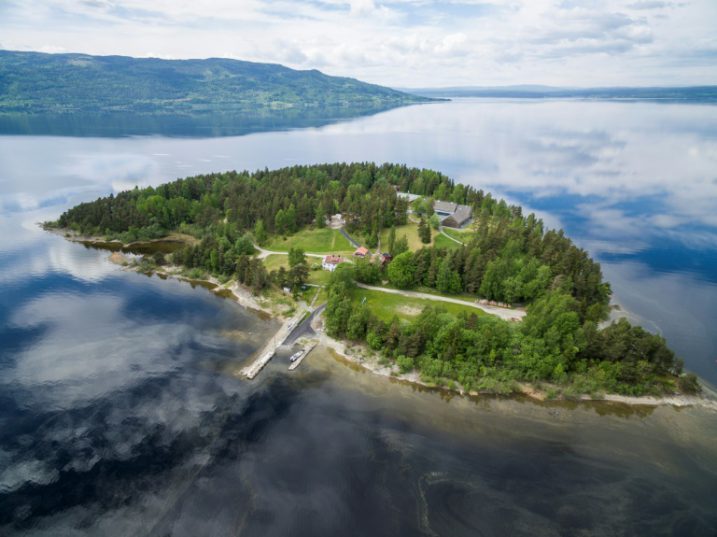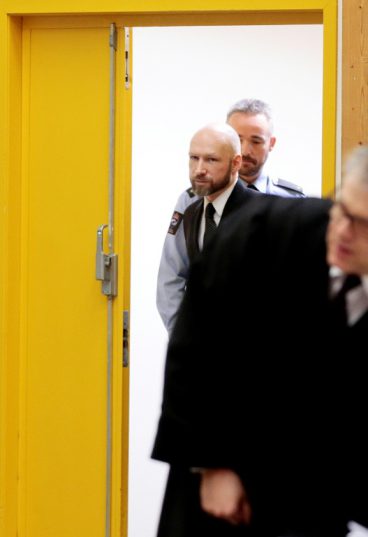Willie’s best position ‘irrelevant’ when he shows leadership like this — Bulls boss
The premiere of “U – July 22”, tracing the horror of that summer day at a Norwegian Labour Party Youth League camp on the island of Utoya, comes just days after one of the worst school shootings in US history, killing 17 in Florida.
Filmed in a chilling single take, the Norwegian movie traces all 72 minutes of the teenagers’ struggle for survival as Breivik picked them off one by one until police finally arrived.
Norwegian director Erik Poppe said that in the seven years since the tragedy, Breivik had repeatedly stolen the spotlight with extravagant court appearances and blanket media coverage, eclipsing the memory of the nation’s dead children.
“As we went on month-by-month, year-by-year, we saw the memory of what took place out on that island faded more and more,” Poppe, a former war photographer, told reporters after a well-received press preview.
“I was meeting survivors from that island. They shared that feeling… and this was worrying them.”
Breivik, disguised as a police officer, tracked and gunned down 69 people, most of them teenagers, on Utoya, shortly after killing eight people in a bombing outside a government building in Oslo.
He has never expressed any remorse for committing the worst atrocity in Norway’s post-war history. He said he killed his victims because they embraced multiculturalism.
– ‘Way too early’? –
The film’s production team took the testimony of several survivors to create a fictionalised but painfully realistic account, with a cast of mainly lay actors.
The movie focuses on a handful of teen protagonists, in particular the sisters Kaja and Emilie, who get separated as the first gunshots ring out.

Far-right extremist Anders Behring Breivik went on a killing spree on the island of Utoya in July 2011
While most of the youth desperately search for hiding spots on the small island as the death toll mounts, 19-year-old Kaja repeatedly runs toward the danger to try to find her younger sibling.
Mobile phones set on silent vibrate throughout the woods as terrified parents, receiving the news at home, try to contact their children.
The camera stays close with the young, ethnically diverse group of campers, with Breivik appearing only a few times as a black-clad shadowy figure in the distance. His name is never mentioned.
Andrea Berntzen, who plays Kaja, said she was just 12 at the time of the attack and had few specific memories of that day apart from “being scared”.
“Hearing about this movie, at first I was very critical because I thought it was too early, like many in Norway,” she said.
“But reading the script and learning that the focus would be on the youth on the island rather than the man behind this was really important to me.”
– Nightmare as ‘entertainment’ –
Some survivors in Norway nevertheless strongly criticised the decision to make the film.
“Erik Poppe took the worst nightmare of my life and turned it into entertainment,” said Kent Rune Pedersen, who escaped Utoya with his life, adding he was still haunted by “flashbacks, dreams, noise, cries and images”.
“It is out of the question that I would go to the cinema to watch such a film,” he told AFP.

Breivik has never shown any remorse for the brutal murder of 77 people in 2011
Poppe said showing a highly emotional dramatisation of events was intended to have a “healing” effect for survivors, victims’ families and a traumatised country.
But he said his motivation to shoot the almost unbearable scenes of youth being cut down in their prime was also political.
“Looking around Europe, neo-fascism is rising day by day, we need to remember what happened out on that island, what neo-fascism can look like,” he said.
The keenly awaited movie is one of 19 pictures vying for the Golden Bear top prize at the Berlin film festival, to be awarded on Saturday.
British director Paul Greengrass, who won the Golden Bear in 2002 for “Bloody Sunday”, is reportedly making his own film about the massacre for Netflix, “Norway”.
Download our app